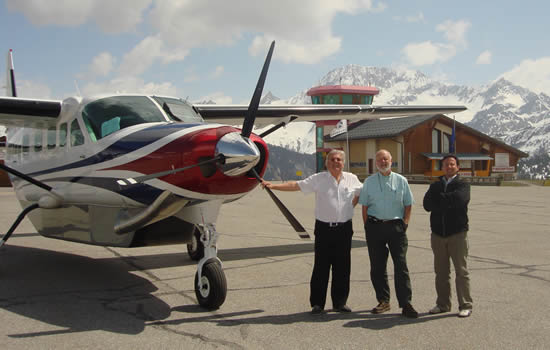|
Established in 1992 and
headquartered at Stauning Airport, Denmark, BenAir has built up a unique
expertise specialising in European Caravan operations. The company operates and
maintains a growing fleet of 20 aircraft and helicopters under EU AOCs, with
scheduled air freight accounting for 90% of its commercial operations.
Alison Chambers
spoke to BenAir Director & Board Member,
Bruno Budim, about his experiences
in the SET sector and the challenges of running a successful operation:
As a SETOps pioneer what advice
do you have for those looking to start out with them?
Light commercial aviation has
suffered considerably over the last decade. Many small commercial operators have
disappeared; (estimated six to seven out of 10 in Scandinavia alone, since
2008.) The picture is the same in Europe. Some operators ceased in the face of
regulatory challenges they couldn’t cope with, but most small operators have
gone out of business because they couldn’t develop sustainable activities in the
very constraining regulatory environment.
The number of commercial air
services available in the periphery of Europe is somewhat lower than 10 and 20
years ago - and considerably lower than in similar geographical environments in
North America for example. SET IMC CAT, however, is an opportunity for us to try
and remedy this. And to finally revive and develop new air services on low
density routes or in remote regions.
 |
|
C208B at Courchevel Altiport. Pierre
Lacorne, Cessna SET CRI & CRE, former president of Aviation Sans Frontičres
(NGO operating C208s in Africa); Peter Bennedsen, CEO & Founder, BenAir
A/S; Bruno Budim, Director & Board Member, BenAir A/S. |
I don't think that we could repeat
today how we started 25 years ago - building up the business one aircraft at a
time - unless considerable capital resources were put in play and some risk
share offered. The present regulatory framework leaves little, if not any space
to start from scratch and to grow organically. In my view it does give the
possibility to adopt collaborative approaches that we could not embrace before.
Hopefully, these can lead to sustainable economics.
Quite simply, "light commercial
aviation activities are local, but the certificates they must rely on must be
shared - on a European level.” It's a new paradigm and a big challenge for our
industry in Europe. This is the approach BenAir is embracing, developing
business activities with partners that have or has identified needs in their
local markets, growing aviation services on our existing AOC, where we bring two
decades decades of SET IMC CAT experience.
What are the top three obstacles
they will face?
I can't say what new or other
operators will, or may, face. It depends on their staff, financial resources,
business case, organization, location, etc. But I can say what has been
challenging for us for these reasons:
- Recruiting and setting up the
right team of people and skills to manage the regulatory and
operational challenges with a good understanding of our business
environment
- Finding and collaborating
with the right business partners to extend our geographical
reach and grow long-term, successful activities
- Knowing where to allocate
capital resources to maximize chances of success, and minimize
risks.
Business success is a critical
driver and underlying condition for aviation safety.
How has the Caravan helped your
business?
The Caravan is dependable, versatile
and a worldwide success. This has meant and still means that we can develop our
business with confidence in the technical platform we use, with flexibility to
adapt to new business cases we find.
The Caravan cannot do it all. As is
common in aviation, it is a matter of acceptable trade-offs. But what the
Caravan does, it does it well, so well that it inspires competitive designs like
the PC12 and the TBM have. The downside is that their pricing has stretched,
probably close to thr outskirts of economic sustainability.
 |
|
Cessna Caravan returning to Oslo Gardermoen
after its daily freight rotation | Photo: ElvindBoe |
We have new business models
coming in now on the back of EASA's relaxation of rules. What do you think of
this?
Most of the new business models we
have seen emerge came more as a response to an excess of regulation, rather than
a relaxation of it, and we see them as being opportunistic in an environment
where rules are overwhelming but their enforcement sometimes deficient.
I am concerned that newcomer
"cost-sharing” models use legal and marketing artifice to bypass the regulation
applicable to commercial air transport by pretending they are private operations
/ services, not commercial. In doing so, they can avoid the rules and the
supervision that commercial operators are submitted to. And this is far from
marginal. It gives them an edge and room to play with such issues like crew duty
times, crew experience, training and medical standards, airport minima, aircraft
equipment, etc. Furthermore, they can operate with very limited supervision and
control by the authorities.
Sadly, I fear it will take
fatalities in our sector to see real decisive reaction from the rule-making and
rule-enforcing authorities, he concludes. |
